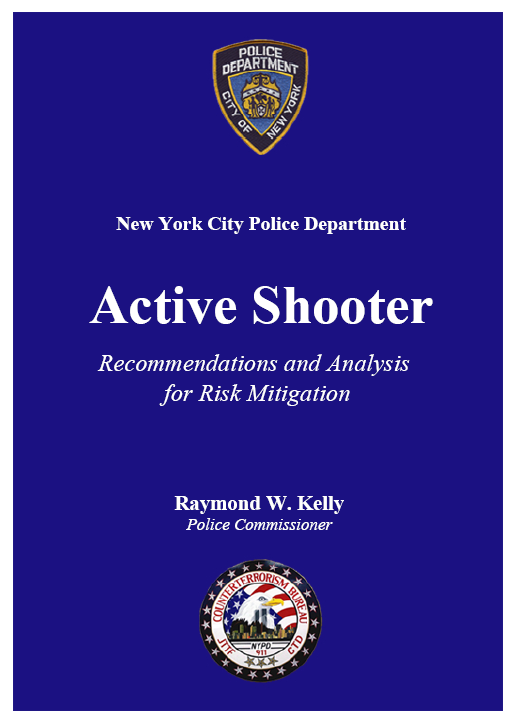 Active Shooter: Recommendations and Analysis for Risk Mitigation
Active Shooter: Recommendations and Analysis for Risk Mitigation
- 182 pages
- January 2011
Active shooter attacks are dynamic incidents that vary greatly from one attack to another. The Department of Homeland Security (DHS) defines an active shooter as “an individual actively engaged in killing or attempting to kill people in a confined and populated area.” In its definition, DHS notes that, “in most cases, active shooters use firearms(s) and there is no pattern or method to their selection of victims.” The New York City Police Department (NYPD) has limited this definition to include only those cases that spill beyond an intended victim to others.
The type of police response to an active shooter attack depends on the unique circumstances of the incident. In the event of such an attack, private security personnel should follow the instructions of the first-responders from the NYPD. Because active shooter attacks are dynamic events, the NYPD cannot put forward a single set of best-practices for private security response to such incidents. However, the NYPD has compiled a list of recommendations for building security personnel to mitigate the risks from active shooter attacks. The recommendations draw on previous studies of active shooter attacks and are presented in Part II.
The NYPD developed these recommendations based on a close analysis of active shooter incidents from 1966 to 2010. This Compendium of cases, presented in the Appendix, includes 281 active shooter incidents. It is organized chronologically by type of facility targeted, including office buildings, open commercial areas, factories and warehouses, schools, and other settings.
The NYPD performed a statistical analysis on a subset of these cases to identify common characteristics among active shooter attacks. This analysis is presented in Part III and the underlying methodology is presented in Part IV. The analysis found a large degree of variation among attacks across some broad categories, including: sex of the attacker, age of the attacker, number of attackers, planning tactics, targets, number of casualties, location of the attack, weapons used, and attack resolution.
